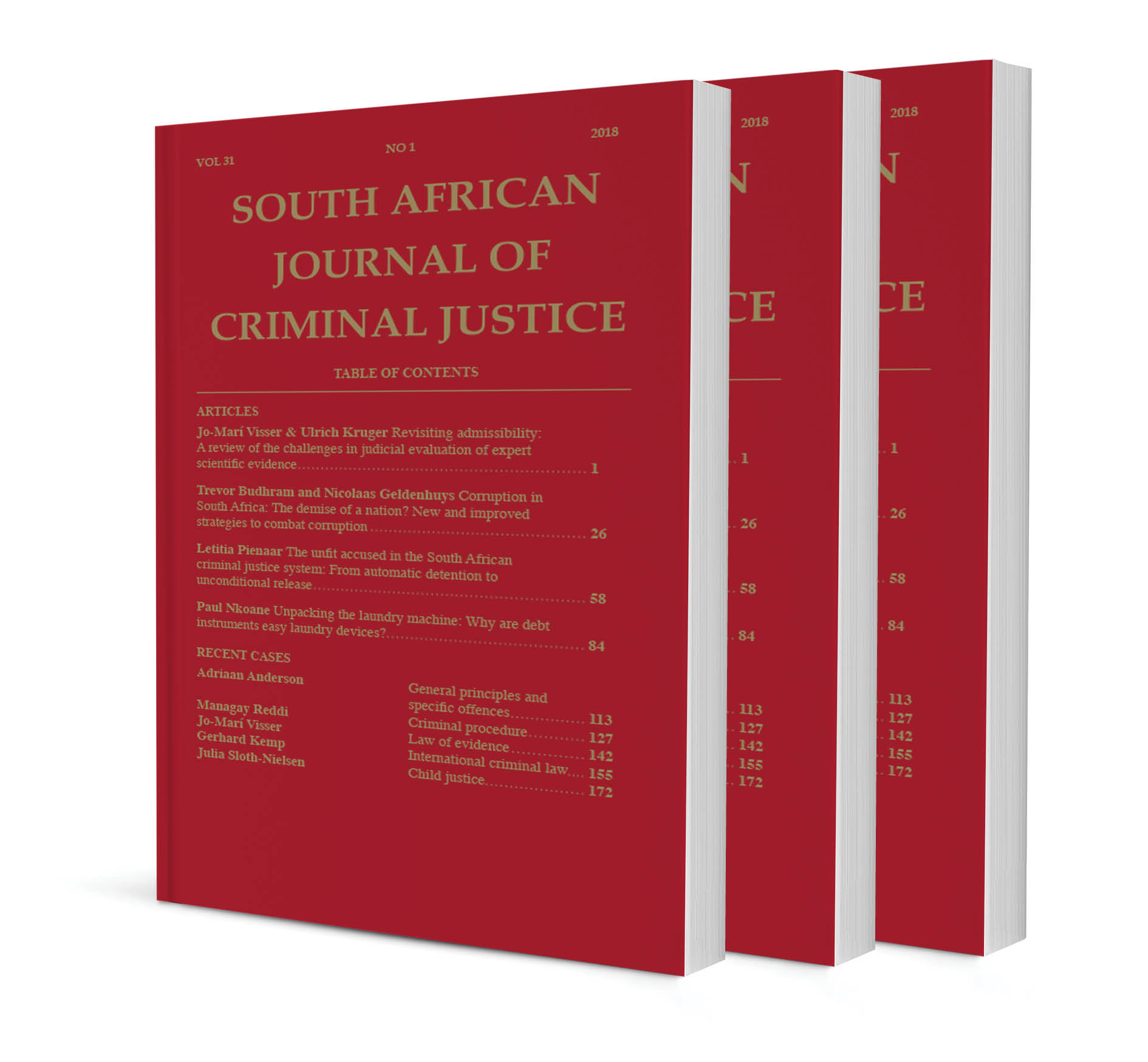
Quantification of damages for unlawful arrest and detention: South Africa, Namibia and Eswatini/Swaziland (1)
Author Chuks Okpaluba
ISSN: 1996-2118
Affiliations: LLB, LLM (London), PhD (West Indies), Research Fellow, Centre for Human Rights, University of the Free State
Source: South African Journal of Criminal Justice, Volume 33 Issue 2, p. 320 – 347
Abstract
The investigation of the quantum of damages which the courts have awarded as compensation for the injuries arising from unlawful arrest and detention by police officers and other law enforcement agents of the State is the major concern of this series of articles. When viewed from the perspective of the courts, the issue of quantification of damages is definitely a burdensome exercise; and to the victim, it is shrouded with uncertainty. It is not easily ascertainable whether this is the reason why, in spite of there being an avalanche of case law, yet there appear to be far less academic deliberations or debate in this volatile aspect of the law of government liability. Certainly, the assessment of damages is one area of adjudication where the trial judge has discretion to make a value judgment and an obligation to make an award that is fair, just and appropriate having regard to the circumstances of the case. It is clear, however, that courts do not pretend to be in a position to repair, except to the extent that money can do so, the types of physical, emotional and psychological damages caused in the process of arrest and detention. Otherwise, how could a trial judge possibly remedy the tricky issues of personal liberty deprivations; the physical injuries; the humiliation, tarnished reputation, and the trauma that afflict the plaintiff as a result of the wrongful arrest and detention; or, the economic damage – loss of income from employment or business; medical expenses incurred or to be incurred in the future? These problems are accordingly scrutinised in this series, including the factors the courts take into account in making the awards; the actual amounts awarded; and the reasons for making the awards. In carrying out this onerous task, the trial courts are guided by the principles outlined by the appellate courts. The enormous amount of materials available in these three Southern African jurisdictions investigated herein, inform the adoption of a three-part serialisation.